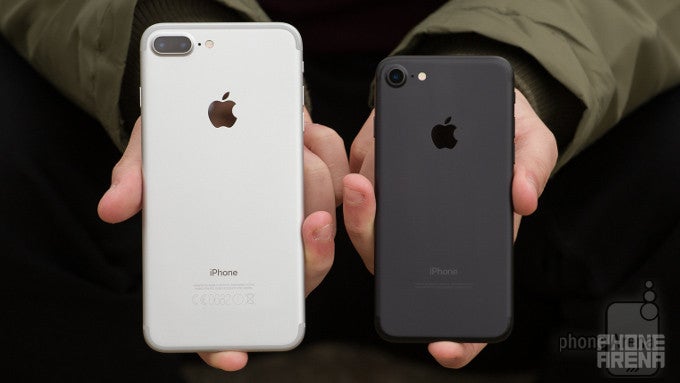Welcome to Apple, the Camera Company
This article may contain personal views and opinion from the author.

“What is this thing?! This thing is huge!”
I review phones for a living and I would often change a few as my daily driver in a week, but I’ve only gotten this incredulous reaction from my girlfriend when she saw the Plus-sized iPhone that I’ve been using in the past week or so.
It’s a gigantic phone and its sheer size is a true shock to people who have not used one before.
Given the fact that the iPhone design overall has not changed much since the iPhone 6 from two years ago and considering that neither the perceived daily performance, nor battery life have changed in a significant way, one comes to the logical thought that it must be the iPhone 7 Plus new camera that drives people to buy it.
We already know how much people use their iPhones as cameras. That’s no news: back in 2010, the iPhone 4 became the most popular camera on Flickr and it’s been this way ever since then with newer models replacing it.
Apple... the camera company. Get used to it.
What is news, however, is that - with many other features maturing - it is constant improvement in iPhone cameras that is able to push sales forward. We might be a bit too late, but maybe it’s time to think of Apple not just as Apple Computers or Apple Mobile, it’s time to start thinking about Apple… the camera company.
Portrait mode on the iPhone 7 Plus delivers an unmatched, DSLR-like portrait quality
Historically, Apple iPhones have - and still are - delivering what most experts agree is the best video out of any phone. 4K video recording came late to the iPhone in comparison with the rivals, but it was the first that came with no time restrictions and the iPhone 6s was the first phone able to freely and smoothly edit up to two 4K videos with iMovie. It’s a shocking revelation, but 4K video editing is still not supported on the best Android phones so far in 2017.
Apple has long held the lead in video stabilization as well. The company’s electronic stabilization produces smooth results, a thing that often gets overlooked yet that makes a real difference in the quality of the videos that one actually shoots.
It's 2017 and high-end Android phones still do not have 4K video editing
And then we come to the bread and butter of the iPhone 7 Plus, the Dual camera system. Matthew Panzarino of TechCrunch argues that the dual camera is currently the heaviest load on the Apple A10 series chip on the iPhone 7 Plus, consistently pushing it to its limits. Apple’s innovative twin capture, where the phone automatically and quietly blends pictures from the two cameras to achieve sharper detail and better quality in the center is one hugely demanding feature.
Camera is the number one thing that pushes the Apple A10 chip to its limits consistently
It’s also interesting that Apple rolled out Portrait mode months after the initial launch of the 7 Plus. The timing alone testifies how much of a technological challenge has it been and one could argue that it is the new Apple A10 chip that makes it possible. Unlike other companies that have introduced the blurred background feature (we can think of Nexus and a few Huaweis), none has committed any serious resources to perfecting it and the result is obvious. No other phone reaches the same level of accurate edge detection and impressive results that one can get with the iPhone 7 Plus portrait mode. In our comparison of Portrait Mode with the similar Google Lens Blur, we reached the following conclusion: "Google's “Lens Blur” effect falls a long way short of the Portrait mode" and "Apple was not the first to do it, but it did it best with Portrait mode".Last but not least, the camera is the only feature that has gotten its own ad campaign that has lasted for years and is still active, the ‘Shot on iPhone’ series of impressive shorts.
All of this convinces us that more than ever Apple is now “Apple, the camera company.” We’ll leave you with an interesting comment on this topic from none other than Apple marketing chief Phil Schiller in an interview with analyst John Gruber from two years ago.
John Gruber: Do you consider Apple one of the leading camera companies in the world?
Phil Schiller: The leading camera company in the world.
Phil Schiller: The leading camera company in the world.

(The camera part starts at the 48:52 mark)













Things that are NOT allowed: